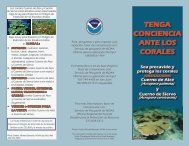Protected Species in the Gulf of Mexico - NMFS' Southeast Region ...
Protected Species in the Gulf of Mexico - NMFS' Southeast Region ...
Protected Species in the Gulf of Mexico - NMFS' Southeast Region ...
You also want an ePaper? Increase the reach of your titles
YUMPU automatically turns print PDFs into web optimized ePapers that Google loves.
Common Offshore <strong>Species</strong><br />
DOLPHINS<br />
Pantropical spotted dolph<strong>in</strong>s occur along <strong>the</strong><br />
cont<strong>in</strong>ental slope. Juveniles are gray, spott<strong>in</strong>g as<br />
<strong>the</strong>y age. These dolph<strong>in</strong>s are extremely active,<br />
frequently breach<strong>in</strong>g <strong>the</strong> surface as <strong>the</strong>y travel.<br />
Group sizes range from a few to 1000s.<br />
Rough-too<strong>the</strong>d dolph<strong>in</strong>s are deep-water<br />
dolph<strong>in</strong>s. They have cone-shaped heads and<br />
large po<strong>in</strong>ted flippers. These dolph<strong>in</strong>s are fast<br />
swimmers and sometimes breach with a low, arcshape<br />
at <strong>the</strong> surface. They travel <strong>in</strong> groups <strong>of</strong><br />
10s to 100s.<br />
Clymene dolph<strong>in</strong>s are found seaward <strong>of</strong> <strong>the</strong><br />
cont<strong>in</strong>ental shelf edge. They are tri-colored with a<br />
dark gray back, gray sides, and a white belly. They<br />
are <strong>of</strong>ten observed <strong>in</strong> groups <strong>of</strong> up to 50. They are<br />
frequently observed mak<strong>in</strong>g full sp<strong>in</strong>s when<br />
breach<strong>in</strong>g at <strong>the</strong> surface.


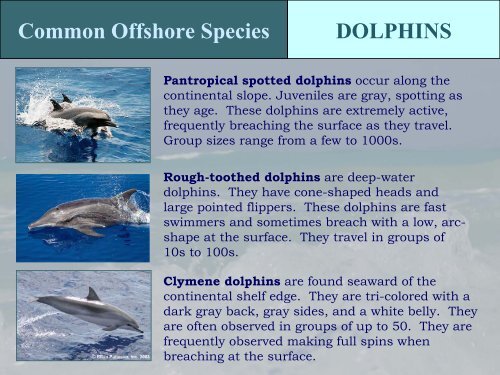
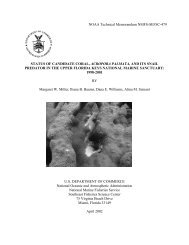
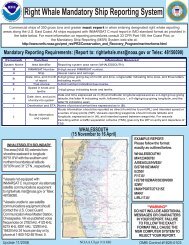


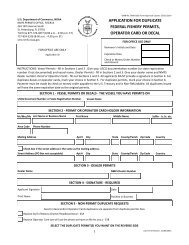
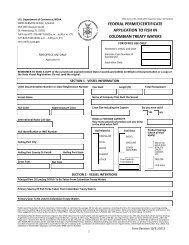


![Right Whale Fact Sheet [PDF] - Southeast Regional Office - NOAA](https://img.yumpu.com/28432664/1/190x245/right-whale-fact-sheet-pdf-southeast-regional-office-noaa.jpg?quality=85)

